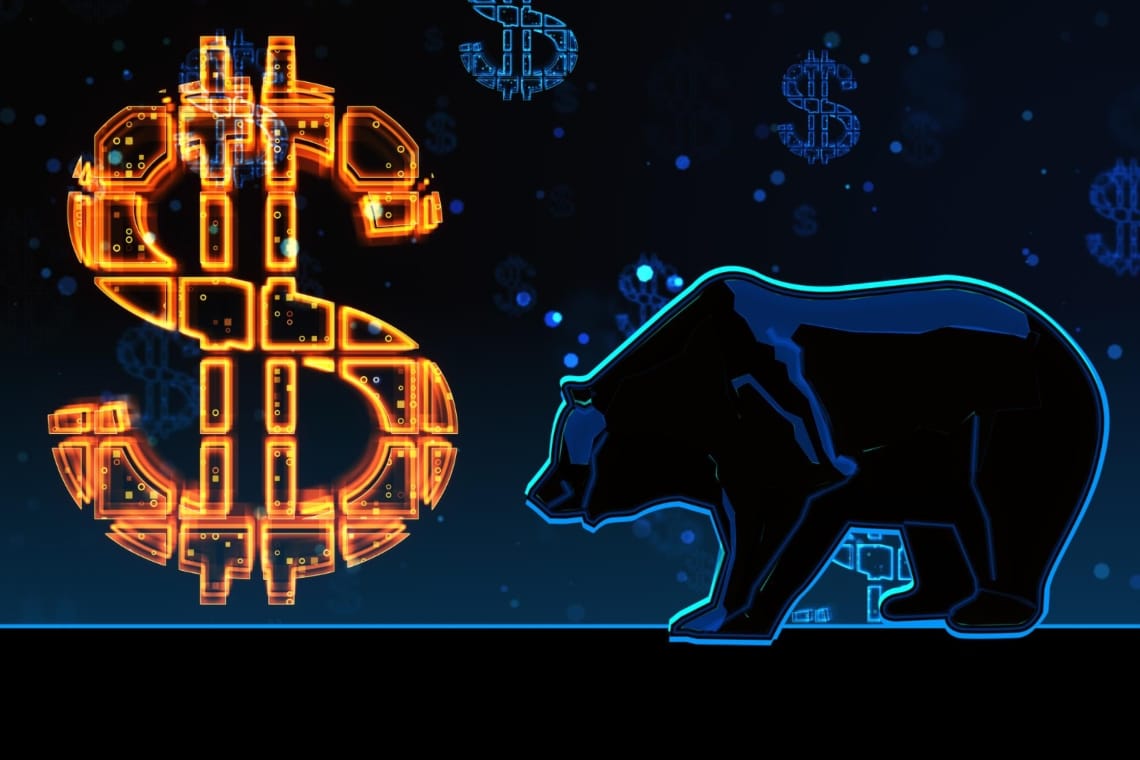The main US index, S&P 500, along with the Nasdaq, touches November 2020 levels, one of the biggest drops ever recorded in two years by the index.
Summary
The performance of the S&P 500 and the Nasdaq
Days ago, JP Morgan CEO Jamie Dimon caused a stir with his prediction that markets could fall an additional 20% from current levels.
Judging by what is unfolding, barring today’s substantial breakeven, the S&P 500 is taking the words of the executive of America’s largest investment bank literally.
The index that encompasses the 500 companies listed on the Wall Street exchange with the highest capitalization fell below 3600, which was the level that could have opened a chasm to a far more resounding descent and in line with the predictions of some analysts.
Having broken through the above support, the index settled at 3588 beginning a downward path that could lead it to reach the dreaded levels that Dimon had hypothesized.
While the losses found in the small-cap sector have affected smaller companies by capitalization mainly because of the difficulty in finding raw materials at competitive prices and the impact of energy bills, things are different for the large indexes, those that are relevant in the New York Stock Exchange.
When talking about the S&P 500 and Nasdaq, among whose ranks we find companies that are among the most important in the US manufacturing fabric, losses have stemmed mainly from problems related to exports and rising fuel costs.
The strong dollar is a problem for companies that export products to countries with weaker currencies, and this affects companies listed on the Nasdaq and the S&P.
In the case of US companies, the problem is of sizable proportions since among those listed on the two major indexes, 60% to 70% of earnings are the result of exports.
Opec for its part has not come to the aid of this problem and in a meeting days ago sanctioned a cut in daily production of 2,000 barrels of oil.
After more than a year of a bear market much of what was to be expected to be discounted in this type of market both on the equities, commodities, and crypto sides (although this is a market with younger dynamics that could yield surprises) has already been discounted but the uncertainties that are still on the analysts’ radar, suggest that there is still room for the worst.
The macroeconomic landscape sinks markets
The abyss is still uncertain according to some influential investors and insiders. Of this opinion is, for example, Jamie Dimon, CEO of JP Morgan, one of the largest investment banks on the planet as we saw above.
A loss of an additional 20% would mean seeing the S&P 500 go from the current $3600 or so to $2880, which would greatly hurt all those investors who have already started rebuilding or otherwise investing some of their funds.
The S&P 500 has not only reached its lowest level in a year, but as Watcher Guru points out in a tweet, it has also matched its November 2020 value a full two years later.
JUST IN: S&P 500 falls to its lowest level since November 2020.
— Watcher.Guru (@WatcherGuru) October 11, 2022
With a drifting macroeconomic picture and increasingly scathing winds of war, there seems to be no glimmer of a turnaround, and the New York Stock Exchange’s main index seems to have its fate already written.
When the floodgate will close is unknown, but we can imagine that keeping an eye on inflation and geopolitical stability could be a really important incentive for recovery.
As we await the impending EU gas price cap and US energy countermeasures, the S&P 500 continues its fall, which we hope will be as short as possible, being aware that statistically the bear market’s months are numbered (at least on paper).




